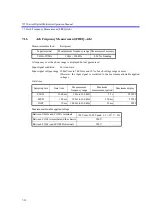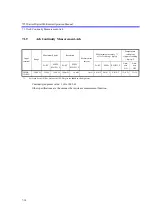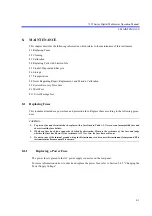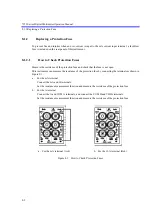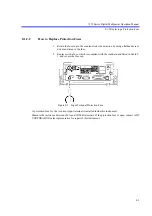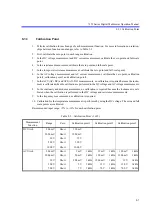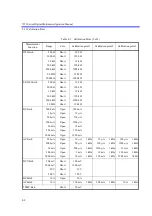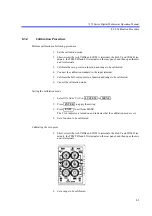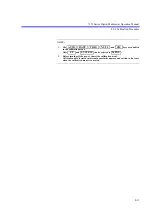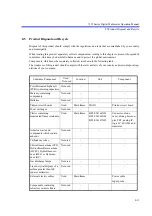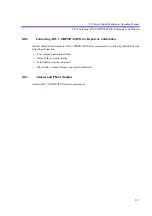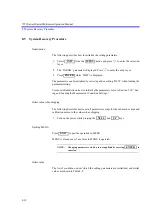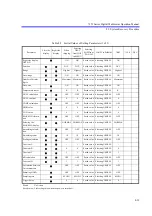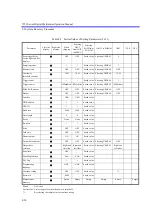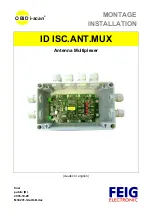
7352 Series Digital Multimeter Operation Manual
8.3.3 Calibration Point
8-7
8.3.3
Calibration Point
1. Perform calibration for each range of each measurement function. For more information on relation-
ships between functions and ranges, refer to Table 5-2.
2. First, calibrate the zero point in each range calibration.
3. In the DC voltage measurement and DC current measurement, calibrate the zero point and full-scale
point.
4. In the resistance measurement, calibrate the zero point and full-scale point.
5. In the low-power resistance measurement, calibrate the zero point and full-scale point.
6. In the AC voltage measurement and AC current measurement, calibrate the zero point, calibration
point1, calibration point2, and calibration point3.
7. In the ACV(AC+DC) and ACI(AC+DC) measurements, no calibration is required because the instru-
ment is calibrated when the calibration is performed in the DC voltage and AC voltage measurements.
8. In the continuity and diode measurements, no calibration is required because the instrument is cali-
brated when the calibration is performed in the DC voltage and resistance measurements.
9. In the frequency measurement, no calibration is required.
10. Calibration for the temperature measurement is performed by using the DC voltage. The zero and full
scale points are calibrated.
Recommended input range: +5% to -10% for each calibration point
Table 8-2 Calibration Point (1 of 2)
Measurement
function
Range
Zero
Calibration point1
Calibration point2
Calibration point3
DCV-Ach
200 mV
Short
190 mV
2000 mV
Short
1900 mV
20 V
Short
19 V
200 V
Short
190 V
1000 V
Short
1000 V
ACV-Ach
200 mV
Short
5 mV
1 kHz
19 mV
1 kHz
190 mV
1 kHz
2000 mV
Short
50 mV
1 kHz
190 mV
1 kHz
1900 mV
1 kHz
20 V
Short
500 mV
1 kHz
1900 mV
1 kHz
19 V
1 kHz
200 V
Short
5 V
1 kHz
19 V
1 kHz
190 V
1 kHz
700 V
Short
7 V
1 kHz
70 V
1 kHz
700 V
1 kHz


